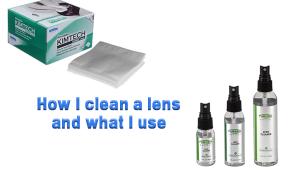Filters For Fall Foliage

In the words of an old country song, "Summer's almost gone, and winter's comin' on." That means that now is the time to get ready for nature's annual organic fireworks. It was a wet summer for most of the country—the east coast in particular—so expect vibrant, explosive fall colors. A flamboyant, colorful fall is nature's way of apologizing for a drab, mediocre summer. At any rate, soon it will be time to get outside with your favorite cameras and capture all that autumn can offer.
If you're like me, every year you want to shoot the best fall foliage of your life. To do so you need a handful of optical glass filters. Yes—optical glass filters—the kind that screw into the front of your lens.
Enhance
Didymium Color enhancers, made of a clear metallic mixture called (surprisingly enough) didymium, are sometimes sold as “red-enhancers.” They have unique absorption characteristics that create a narrow-pass filter which blocks only certain wavelengths of light. Consequently, you’ll get bright foliage colors that are free of distortion. They accentuate the vibrant, warm fall colors without stepping on everything else.
Didymium filters are a secret weapon—few people know about them—so you can create incredible fall scenery while your friends are wondering what you know that they don't.
Polarize
If you've never used a polarizer you've missed out on one of photography's greatest assets. Buy one today and experiment with it all during the fall and winter. You'll be amazed by the difference a properly applied polarizer can make. Polarizers darken a blue sky and make the clouds pop without causing color shift or adding a colorcast of their own—and that makes them immensely popular for fall foliage imagery. Also, since polarizers reduce or eliminate surface glare (the light that is reflected from slick-surfaced objects like leaves) they allow true, richly saturated colors to be recorded. If you're trying to catch the reflection of fall leaves on a pond or lake, a polarizer is a must. You'll love how polarizers help tame snow glare, too.
Note: Many cameras, digital SLRs in particular, require Circular Polarizers. Check the owner’s manual for your camera before buying a polarizer.
Shift Colors
Warming (amber) and cooling (blue) filters get their names from the common notion that colors near the red/orange end of the spectrum are “warm” while colors at the blue/violet end are “cool.”
Use a warming filter—an 85A for instance—to add a gentle glow like the rusty colors we see at sunset. To simulate the blue of twilight or early dawn, shoot through an 80A. And always remember that the easiest way to exaggerate the effect of a filter is to slightly underexpose the scene.
















































